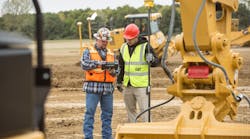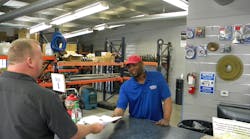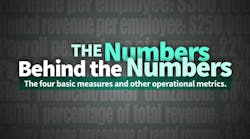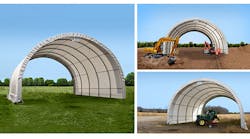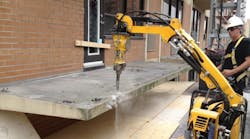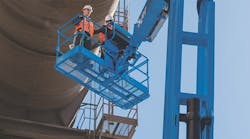We are in unprecedented times for used equipment values and sales. Demand and price tags have never been higher. Units that traditionally would be considered low cost, low value because of poor condition are now valued higher than “good” gear was priced at not that long ago.
How are these high price tags impacting your business and fleet planning? The answer certainly lies in your market segment and may vary between rental, dealer, auctioneer, manufacturer, and end user. Which segment you are in may also dictate whether you are on the winning or losing side of this used equipment coin.
What factors are pushing used equipment values sky high? In simple terms it comes down to supply and demand. The whole picture can be painted by digging into the unavailability of new equipment on the open market. Lead times can realistically be 24 months out. Not too far in the recent past, a lead time of six months would have been extreme - now it is the dream. According to the U.S. Used Construction Equipment Market- Strategic Assessment & Forecast 2022-2028, the number of used units is expected to increase from 47,372 in 2022 to 54,307 units by 2028.
Several factors impact individual businesses due to the demand for used gear and the uncertainty of new deliveries - such as which segment you are in, the overall economy, are you buying or selling equipment, trading in, overall health of your business and how well you can forecast and create a fleet-management plan in an ever-changing world.
Whereas such constraints hinder some business operations, as they say one person’s trash is another’s treasure. Meanwhile, opportunity is knocking on other businesses' doors. For example, according to Nic DiPaolo, CEO of ProCon JCB, he went to market with an aggressive purchasing strategy during the height of COVID to acquire new equipment on his yards for when customers were ready to spend money.
DiPaolo created his own Field of Dreams of “If you build it, they will come.” And come they did. ProCon JCB benefited from its new equipment inventory, admittedly a very high-risk plan with sales to both existing clients and substitution sales to new customers. When customers went looking to buy from their traditional preferred vendors and those lots were empty with one- to two-year lead times (if known at all) and they had money in hand to purchase a machine now, they could find it ProCon JCB. So if a contractor could not find his favorite skid-steer loader or backhoe, he was more willing to give the JCB unit a try, creating an opportunity for ProCon to not only capitalize on a sale but to build a new relationship. ProCon JCB was ready to provide solutions to buyers when other dealers could not fulfill prior commitments and/or new business.
Other dealers have benefited in similar manners creating win-win situations for themselves and the communities they serve. While at the same time, many manufacturers have lost business because of long lead times and the inability to meet customer requests - or even simply share accurate delivery dates for new gear.
Factors impacting prices
To understand where we are, how we got here, and where we may be going one needs to look at the current situation for a higher elevation view over the past few years. There are several macro factors that have created this perfect storm including the market and economy pre-COVID, the height of the pandemic, post-COVID, new equipment sales, supply chain issues, the health of the construction industry and increased need for iron to complete projects.
Before COVID-19 came along, almost no one could have envisioned much less planned for a pandemic and how it would impact everything about the world we live and work in. The impacts both personally and professionally have been unprecedented and in ways only comparable to events in recent history such as the recession of the late 2000’s and 9/11. In March 2020 everything seemed to be operating well or at least “normal” until one day it wasn’t, and everything shut down. Governments imposed lockdowns, and businesses closed. Projects that were buzzing with equipment were quiet. People stopped working and stayed home to be safe.
When we, as a society, started to return to a new normal, many things had changed in this new world. Many changes we did not comprehend or understand until much later, some of which perhaps we are still trying to understand or are just now -- almost three years later -- feeling the effects of.
One of the biggest impacts were the supply chain issues that arose from businesses not operating. Bottlenecks and backlogs became global problems. Many workers decided to retire or not return to work at all. When we returned to work many businesses were at overcapacity with fewer human and capital resources. Raw materials were no longer available or in limited supply. Factories did not have the capacity to produce the goods in demand. There were and still are backlogs at every step of the way in the chain all the way to the consumer. These problems were widespread in every area of our life as consumers and construction equipment buyers were no exception.
Post-COVID the government infused money into a variety of projects that increased the demand for used equipment as well.
Equipment manufacturers have always had to juggle the cyclical demands of supplying the rental industry with new gear while meeting forecasting and fleet-management plans. Even in good times determining lead times has always been somewhat of both an art and a science. Then during the peak of COVID manufacturers had to return to the drawing board, learn to build the plane while flying, and only the most nimble and flexible of organizations would flourish while others had to make new strategic plans to focus on and decide on who to cater and how.
What product lines should manufacturers confidently bring to market? Which ones to place on hold or discontinue? These are all questions OEMs had to consider. Then one of the biggest questions from the rental industry and other end users - when can I expect to receive my new unit if I placed the order today? The fact is almost no one knew. And the answer could change tomorrow. And the answer did change tomorrow and the day after, so on and on. This cycle continued in this new world until we got to where we are today with lead times extended up to 24 months. We went from a world of six months lead time being considered to be really backed up to an unthinkable two years out for new gear. With the extended and ever-changing lead times came price increases and fluctuations that were just as predictable for many buyers.
The result was an entire industry of customers that typically bought new equipment were forced to also look at potentially adding used equipment to their fleets. In some cases, a lot of used units. Rental companies, contractors, and other end users flocked to used gear and the demand skyrocketed. Buyers realized that they could get quality used equipment that was readily available on the ground until it wasn’t. The demand reached such a peak coming out the pandemic that the demand for used equipment surpassed the supply and iron values reached new heights.
Business impacts
The results of new equipment not being available and used equipment prices at all-time highs impacted every type of business in the industry in one way or another - some good and some bad. Rental companies had to re-examine their fleet management plans to forecast how to navigate possibly aging their fleet because of not being able to add replacements while at the same time balancing whether or not to capitalize on the higher sale prices of offloading older machines. Healthy companies have been able to do a little of both. Get leaner on underutilized cat-classes while building capital for future growth as needed.
Dealers of new equipment have struggled to fill customer demand and get new shiny gear on their lots - unless they had a great relationship with their manufacturers and got ahead of the curve and spent money early. Some dealers are also diversifying and adding more used sales to their product mix.
One of the results of the pandemic is that almost all of us have experienced more virtual experiences such as working from home, countless Zoom meetings, making more purchases online or from our phones, having everyday items we used to “go do” in person now we have delivered to our homes such as groceries and doctor appointments. Traditional in-person meetings now are done from a laptop remotely. Online equipment auctions certainly fall in this category as well. Such companies were gaining in popularity as the industry became more comfortable with their platforms and expected returns over the past few years.
Just as we still live everyday with safety measures from 9/11, we will likely continue to make our lives more virtual. There will always be auction buyers that want to see equipment in person and kick the tires before bidding. However, online auctions have certainly helped facilitate the used equipment markets throughout the pandemic almost being the driving forces to keep machines moving through the chain. Their popularity looks likely to increase as they continually improve their processes and both buyers and sellers have more confidence conducting auctions online.
End users that traditionally are accustomed to new machines have also had to learn to adapt to both buying and using used gear, adding another element of a new buyer in the used equipment space. Some are more educated about the used process and absorbing used machines into their fleets. Either way their participation in the market at every level has contributed to the higher price of used equipment.
Adapting to change
We certainly did not expect a pandemic a few years ago and we probably never expected that rusty piece of iron riddled with mechanical issues to fetch the amount of money it currently is demanding in the market along with high inflation providing additional hurdles. However, we made it through COVID and we will make through this used metal madness.
The rental industry has always adapted to the ever-changing economy. Just as we did 15 and 20 years ago, we have done the same today. We are an industry of creative out-of-the-box thinkers and problem solvers. There does not appear to be a light at the end of the tunnel just yet for the scarcity of new equipment and spending more money on used equipment. However, all stakeholders are evolving and adapting to ensure that we get to a better place and balance of both new equipment and used gear moving our businesses and economy forward.
Daniel McCoy is a rental industry veteran, consultant and coach located in Raleigh, N.C., and has been a contributor to RER since 2013. Visit his website at mccoyconsulting.weebly.com


